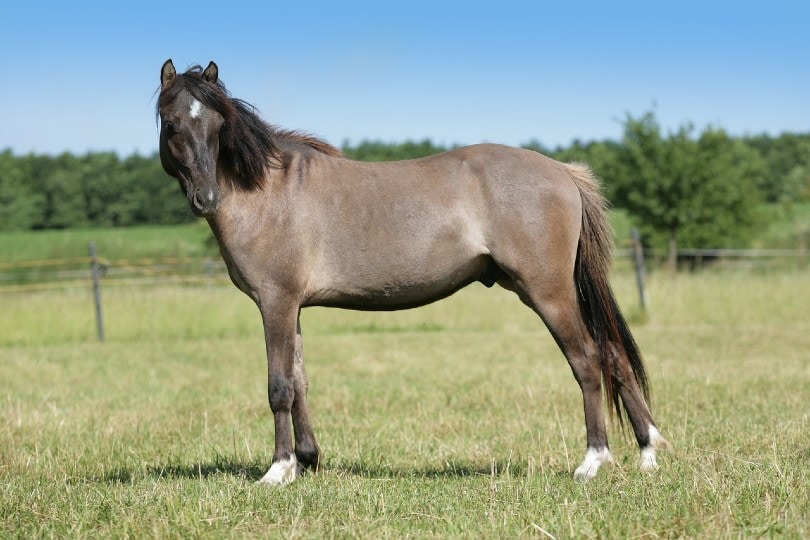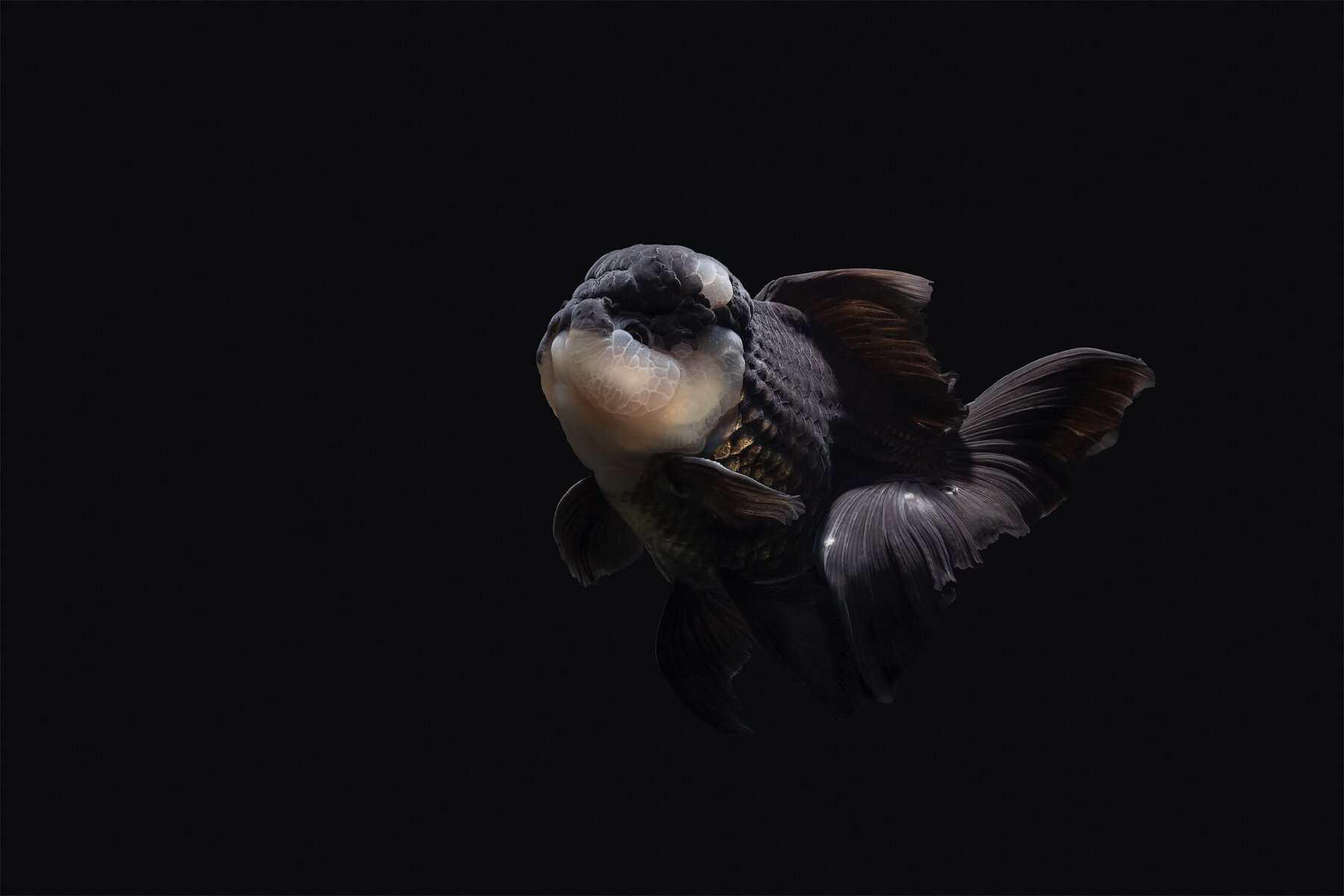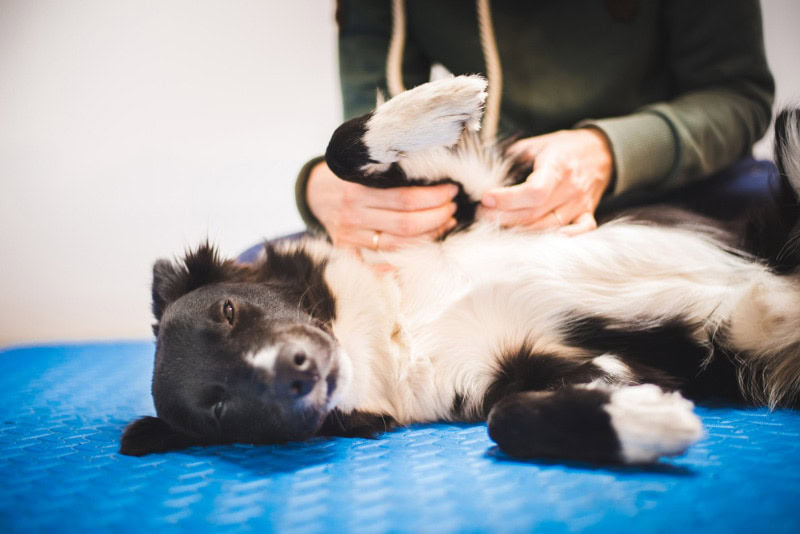You can often figure out the exact age of a horse using their records. You may be able to find breeding, vet, or even registration records. It may take a bit of digging, but these are typically available. But if you can’t find any records, things get a bit more complicated. You may have to check different parts of your horse’s body for evidence of their age, such as their teeth.
Sometimes, you’ll be able to make a fairly accurate estimate. Other times, this just won’t be possible. You may be able to get a range of a few years, and that should be enough for most purposes.
In this article, we review several different techniques that you can use to estimate your horse’s age.

The 9 Methods to Tell the Age of a Horse
1. Use Records
You should have access to the horse’s past records, which will help you figure out how old they are. The most accurate age information is likely to be found on their breeding and registration records, which include official details about their parentage and birthdate. Some vet records may have the horse’s exact age, though records may become vaguer as the horse gets older.
The date of birth should be listed on any breeding or registration records. Alternatively, you may be able to locate the vet that the horse previously saw, who may know the date of birth.
Preferably, you should see these papers before purchasing any horse. The original owner should have breeding records. If they don’t, you should be a bit suspicious. Breed associations typically have records for their particular breed. If the horse belongs to a breed, you should be able to locate the horse’s age based on this information.
Not all horses have breeding or registration papers, though. This is often the case for horses that aren’t from particularly amazing bloodlines. If the horse wasn’t bred for show purposes, these records might not be available. Abuse and neglect situations may also eliminate any potential records.
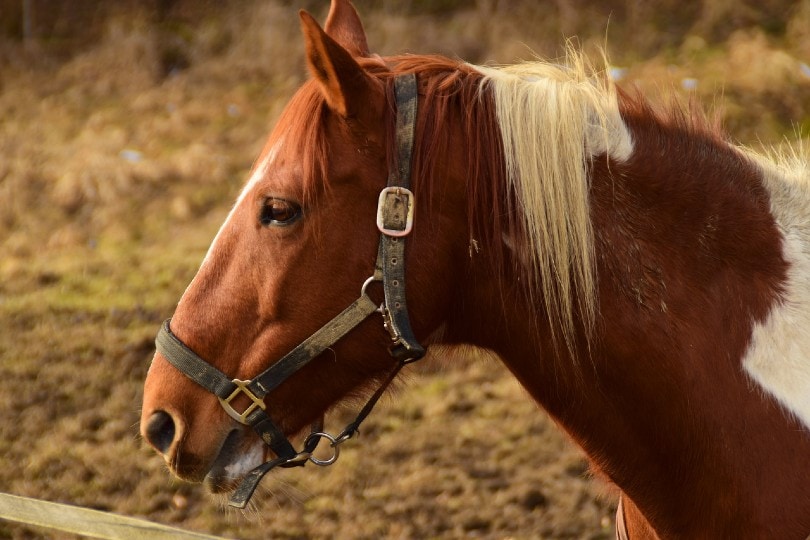
2. Check for a Chip
Nowadays, microchipping horses is becoming more common and it’s even mandatory for certain scenarios. This is a highly effective method of identification and is encouraged for their protection and traceability. Even if the owner later sold the horse, that chip should still be there. It should include the horse’s details including birthday. Alternatively, you should at least know when the chip was placed. This will give you a minimum age, as the horse couldn’t have been chipped before birth.
If you are buying a horse, consider getting them scanned. This can back up any records that the seller provides and will prevent fraud. It can also help find lost horses, which are often sold soon after they are stolen.
After purchasing a horse, change the information on the microchip to your own. You should also consider microchipping any horse that doesn’t have one. Horses don’t wear ID tags like dogs and cats, so a microchip is often their only identification.
3. Check for Brand
While microchipping is available, inexpensive, and virtually painless, some older horses have been identified through branding. This marking can help you track down the original owner, who may know the horse’s age. It may also help return lost and stolen horses.
Often, the brands don’t explicitly state the owner. Instead, you’ll need to be familiar with the brand or be able to figure out whom it belongs to. If you don’t know, you may be able to ask other horse owners in the area or visit a nearby stable and ask around.
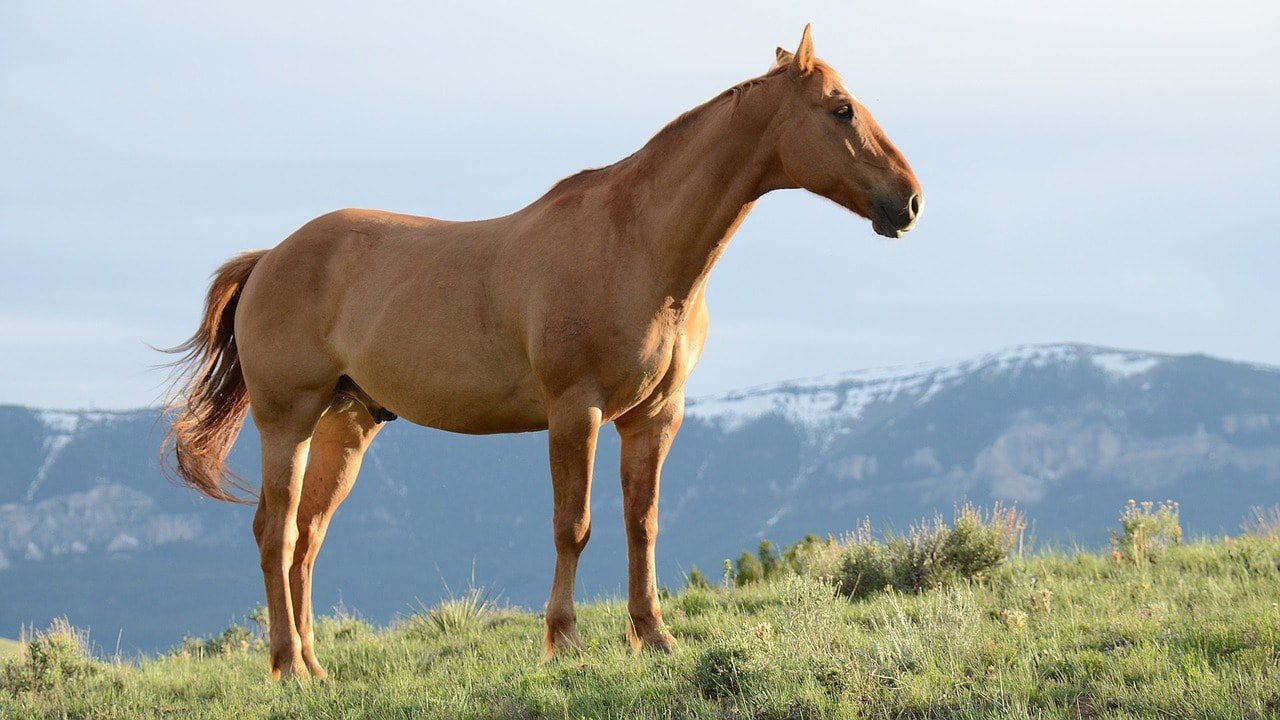
4. Check for Tattoos
Thoroughbreds that were used for racing often have a tattoo on their upper lip. This lines up with information in a racehorse database, which should give an accurate indicator of the horse’s age. If your horse has a tattoo, you should be able to look up the horse based on their tattoo easily. They often get these tattoos when they are very young, so any thoroughbred that was a racehorse should have them.
5. Look at General Physical Signs
As horses age, they tend to go through physical changes. For instance, horses usually develop gray hairs and have a reduced ability to work or exercise. You may be able to estimate your horse’s age based on this information. Usually, these changes may start to occur from 15–20 years of age. This can help you determine a young horse from an old one but probably won’t help you beyond that.
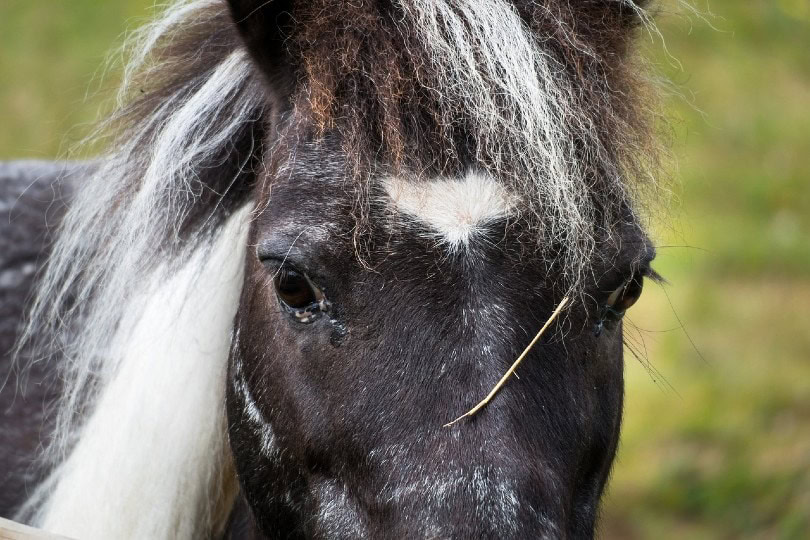
6. Check Their Teeth
If you don’t have access to records, teeth are probably your next best bet. Around the age of 10, horses develop brownish vertical grooves near the gumline along their top corner incisors, which are located at the front of the horse’s mouth. These lines are known as Galvayne’s grooves.
These grooves reach halfway down the tooth by 15 years and extend all the way down by 20 years. Around 25 years, Galvayne’s groove is halfway worn away, and by 30 years, it has completely disappeared. If this method is new to you, looking up pictures is your best bet. These will help you figure out exactly what you’re supposed to be looking for.
The grooves on the left and right sides likely won’t be in the same place. However, this is often good for getting a more accurate measurement. Simply average out the location of the grooves on both teeth. Often, you can get a pretty accurate estimate using this method.
- 10 Years
At 10 years old, the grooves will just begin forming at the gumline. You’ll barely be able to make them out at first, but they get longer with age.
- 15 Years
At this point, the grooves should extend to about the halfway point of the horse’s tooth. The top of the line should be a bit wider and darker than the bottom.
- 20 Years
By age 20, the lines should touch the bottom of each tooth. The horse’s teeth may have darkened by this point, but the lines should still be clearly visible.
- 25 Years
Starting at age 20, the lines start disappearing from the top of the gumline. By the time the horse is 25, the lines should have disappeared on the upper part of the tooth but still be present on the lower end of the tooth.
- 30 Years
By age 30, the lines should be practically gone. A little bit may be visible on the bottom of the tooth.
7. Check for Milk Teeth
Foals can be born without teeth or with four central incisors. If born without teeth, central incisors will erupt at 8 days of age. These are often called milk teeth, as the foal is drinking milk at this time. The central incisors erupt first, followed by the other teeth. Milk teeth are smaller and whiter than permanent teeth. They are also a bit more yellowish.
Horses usually have a complete set of milk teeth by around 9 months. Newer teeth won’t have signs of wear as they haven’t been used much. Therefore, you can tell the age of young foals using their teeth, even though they have yet to develop any grooves.
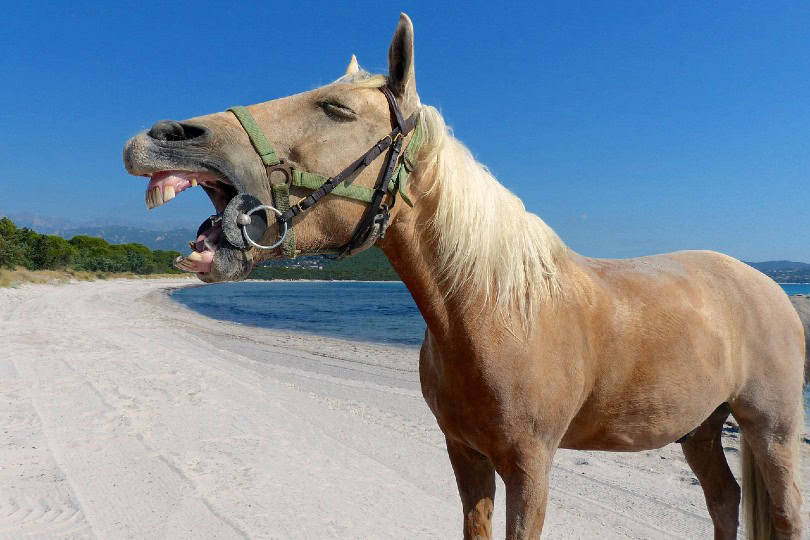
8. Watch for Dental Changes
Between the ages of 1 and 5, horses go through several dental changes. At around 2 years of age, all teeth will show wear at this point, as they have been used extensively.
By age 3, the center incisors should begin to fall out and be replaced by adult teeth. The adult teeth will be bigger.
At age 4, the intermediate milk teeth are replaced by permanent teeth. Therefore, only the corner incisors will still be milk teeth.
By age 5, all the teeth should be replaced by adult teeth.
9. The Task of Aging Horses 5–20
Horses between the ages of 5 and 20 can be difficult to determine. They have lost all their milk teeth, which removes one age marker, however, Galvayne’s Groove can help in this task as previously explained. With the following information, you can make a decent educated guess.
Between the ages of 5 and 7, the horse’s teeth will show increasing levels of wear. However, it is difficult to get an accurate estimate based on this alone, as diet plays a significant role as well. The teeth won’t project outward at this point, either.
At the age of 7, the upper incisors develop hooks and spurs where they overhang the lower incisors. This usually disappears at the age of 9.
The concave shape of the teeth causes the incisors to grow outward around the age of 9 or 10. This leaves behind light markings, which usually disappear by the time the horse is 12.
At age 12, the incisors will elongate and become chisel-like, projecting outward quite a bit. Sadly, nothing happens between the years 12 and 20, which makes the ages of these horses difficult to determine.
The horse’s incisors will continue to get longer. If a horse’s teeth are very long, they are likely older. However, there isn’t a set length that a horse’s teeth should be at each age, so it can be difficult to determine their age based on this alone. Teeth will also become darker in color, but this is different from horse to horse.
Improper diet and care can also make the teeth age faster than they should, which may make the horse seem older than they are. For this reason, it just isn’t accurate to base a horse’s age on the wear of their teeth.
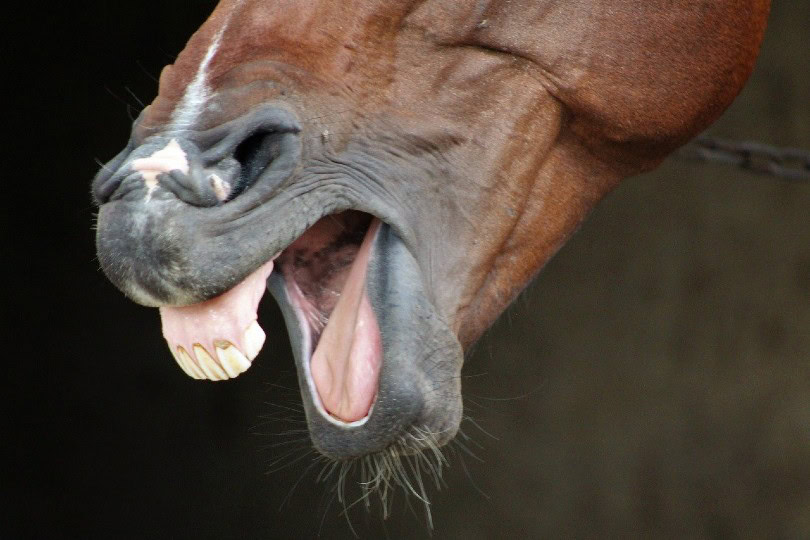

Final Thoughts
The best way to tell the age of a horse is to look at their papers. Breeding records and registrations are the most accurate options. These should list the horse’s exact birthdate, which will provide their exact age. In most cases, these documents should be available to you, though you may need to do a bit of digging to find them.
If an owner is selling a horse without any documentation, you may want to be a bit suspicious. While not all horses have documents, most will have vet records with a birthdate on them. You should ask to see these, at the very least.
Besides records, teeth are the most accurate method to determine age. If the horse is under 5, you should be able to determine their age pretty accurately. Younger horses are also easy, as they get in their milk teeth and then their permanent teeth.
The wear and tear of a horse’s teeth is sometimes helpful, but this is not as accurate. A horse that has eaten hay and grain will show less wear than a horse that has eaten mostly grass. Sandy soil can wear teeth faster due to the abrasiveness of chewing sand. Dental work may also change the appearance of teeth, which can make it more difficult to determine their age.
Some horse owners state that you can determine a horse’s age based on their ribs, but this is not entirely accurate. There is no scientific evidence to back up changes in a horse’s ribs as they age, which is why we recommend using teeth instead.
Related Reads:
- At What Age Should a Horse Stop Being Ridden? Our Vet Reviewed Guide
- 9 Tips for Braiding Your Horse’s Mane
Featured Image Credit: filinecek, Pixabay
